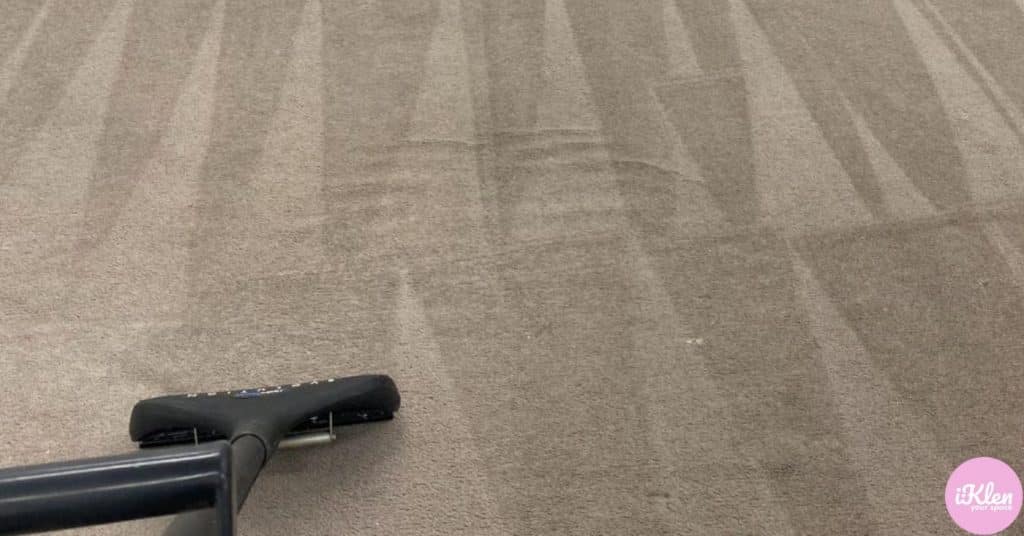We’ve all been there – you spend your weekend scrubbing, steaming, and meticulously cleaning your carpet, expecting it to look as pristine as the day you bought it. But instead, you’re left staring at a carpet that’s mysteriously turned brown. It’s a frustrating situation that leaves many of us scratching our heads and wondering where we went wrong.
Understanding the root cause of this browning phenomenon is crucial, not just for our peace of mind but also for ensuring the longevity and appearance of our carpets.
In this article, we’ll delve into the science behind why carpets can turn brown after cleaning and offer practical solutions to prevent it from happening in the future.
Understanding Carpet Browning
If your carpets still look dirty after steam cleaning, or even have brown spots, here’s why:
Common Causes of Carpet Browning
Carpet browning may seem like a mystery, but it’s often the result of several well-known factors. One prime suspect is over-wetting. Carpets that don’t dry quickly enough can pull up dirt and residue from the padding beneath, leading to those unsightly brown spots.
Another culprit? The high alkalinity of certain cleaning solutions. If not properly neutralized, these solutions can leave behind a residue that, over time, turns brown. Last but certainly not least, are those pesky sugar spills from beverages that weren’t completely removed and have caramelized, adding to the discoloration drama.
The Science Behind the Discoloration
Diving deeper, let’s get to the nitty-gritty of why carpets turn brown after what’s supposed to be a rejuvenating clean. The science boils down to two main phenomena: wicking and cellulosic browning. Wicking happens when moisture travels up the carpet fibers, pulling dirt along with it, which then surfaces and becomes visible as the carpet dries.
Conversely, cellulosic browning is a bit sneakier. This occurs when natural fibers, like cotton, in the carpet or its backing absorb moisture and release a brown pigment. It’s as if the carpet’s trying to go back to its roots, quite literally!
Both processes illustrate the delicate balance needed between effective cleaning and maintaining the vibrant appearance of our carpets.
Assessing Your Cleaning Techniques
The Role of Water Temperature and Detergents
Choosing the right water temperature and detergent makes all the difference in carpet cleaning. Warm water enhances detergent effectiveness, breaking down dirt more easily. However, too hot can damage the carpet fibers, leading to discoloration.
We opt for professional-grade detergents specifically designed for carpets. These products help in lifting stains without leaving behind any residue that could attract more dirt. It’s a delicate balance, but getting it right prevents those baffling brown spots from appearing.
Potential Over-Wetting During Carpet Cleaning
Over-wetting is a common culprit behind carpets turning brown after a cleaning session. Excessive water penetrates deep into the carpet fibers, dissolving and bringing to the surface hidden dirt and residue.
As the carpet dries, this dirt migrates to the top, resulting in a brown tint. To avoid this, we use just enough water to cleanse and then employ high-powered fans to expedite the drying process. This approach helps in minimizing the risk of over-wetting, ensuring carpets remain vibrant and brown-spot-free post-cleaning.
Dealing With Wicking and Browning
Explaining the Wicking Process
Wicking involves moisture moving to the surface of your carpet as it dries. When deep-seated dirt and stains get dissolved during cleaning, they don’t always disappear entirely. Instead, as the carpet dries, the dissolved substances travel up the fibers to the surface, leading to those frustrating brown spots. It’s like your carpet is trying to bring back fashion statements from the mud-playing days of childhood, but without the fun memories.
Preventive Measures for Carpet Browning
Avoiding carpet browning begins with controlling moisture levels during cleaning. We keep water use to a minimum and ensure that drying kicks off immediately. Employing professional-grade fans significantly cuts down drying time, thwarting the ambitions of any lurking stains that dream of making a comeback.
Additionally, opting for a cleaning solution with a balanced pH can stop those brown spots before they even consider appearing. It’s a bit like telling them, “Not today, stains. Not today.” In areas prone to high humidity, a dehumidifier becomes our best friend, creating an environment where moisture and stains find it hard to play their usual tricks.
Best Practices for Carpet Cleaning
Preventing brown stains after steam cleaning involves more than just wishing them away. We’ll walk you through some top-tier strategies to keep your carpets looking fresh, explaining everything from selecting the right cleaning agents to how to deal with those pesky brown stains if they do appear.
Selecting the Right Cleaning Agents
Choosing the right cleaning agents is paramount for keeping your carpets vibrant and brown-spot-free. We recommend opting for cleaning solutions with a neutral pH level. These products are less likely to react adversely with your carpet fibers, reducing the chance of browning.
Additionally, it’s important to test any cleaning solution on a small, inconspicuous area of your carpet before committing to a full cleaning. This step ensures the selected agent won’t discolor or damage your carpet.
Drying Methods to Prevent Browning
Drying your carpet properly is equally crucial to prevent browning. Over-wetting is a common misstep that can cause those unwanted brown spots, primarily through the wicking process.
To combat this, limit your water use during cleaning and consider employing high-powered fans to speed up the drying process. In humid environments, a dehumidifier can work wonders by reducing moisture in the air, making it harder for brown spots to form.
How to Remove Brown Stains After Carpet Cleaning
Even with all the right precautions, brown stains may well still show up. But don’t panic! There’s a straightforward method to tackle them. Mix a white vinegar and water solution (1 part vinegar to 2 parts water) and apply it gently to the affected areas. This mixture can help neutralize the browning. After applying, carefully blot the area with a clean, dry towel and then let air dry. For stubborn stains, repeating this process or seeking professional help may be necessary.
Remember, keeping your carpets clean and free from browning doesn’t have to be a chore if you follow these guidelines carefully. With the right preparation and response strategies, you can keep your carpets looking as good as new.
Professional Versus DIY Cleaning
When to Call in the Experts
Sometimes, a carpet problem is like a tricky math equation; no matter how much we try, the answer eludes us. That’s when we know it’s time to bring in the pros. If our carpet turns brown after cleaning it, despite our best efforts following all the right steps, professional help is likely needed.
Experts possess the advanced tools and specific knowledge to diagnose and treat issues that DIY methods can’t tackle. They can identify the root cause of browning, whether it’s due to over-wetting, residue buildup, or something more elusive, and fix it accordingly. Calling them may well seem like an extra expense, but considering the cost of replacing a carpet, it’s a wise investment.
The Pros and Cons of DIY Cleaning
Embarking on a DIY carpet cleaning adventure can be both exciting and a bit scary. On the bright side, we save money and get the satisfaction of a job well done. We’re in total control, able to pick the eco-friendliest cleaning products and tackle the task at our own pace.
However, there’s a flip side. Without the right equipment and expertise, we may well end up making things worse, leading to the dreaded browning. Incorrect cleaning methods can push dirt deeper into the carpet fibers, while the misuse of water and detergents can leave behind unsightly stains.
In essence, while DIY carpet cleaning has its place for maintenance and minor issues, it’s crucial to recognize when a problem is beyond our skill set. That’s when calling in the professionals isn’t just an option—it’s a necessity.

